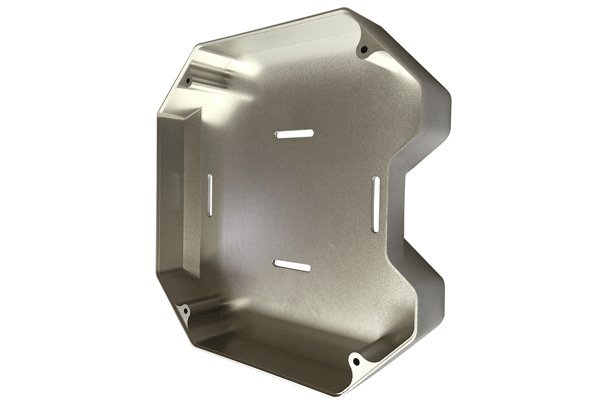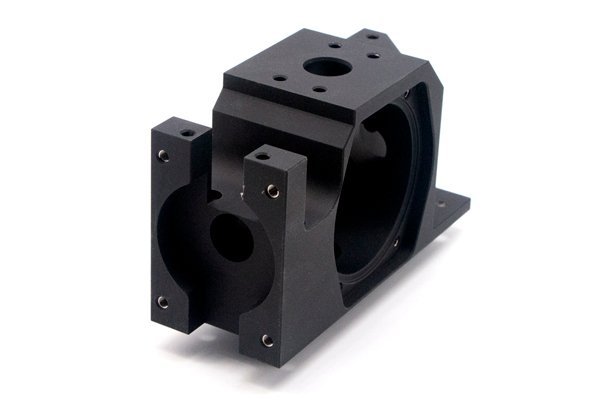Imagine standing at the helm of a manufacturing facility, surrounded by the whirring of machines and the faint scent of metal shavings in the air. It’s not just another day; it’s an opportunity to push the boundaries of what’s possible. High-precision CNC (Computer Numerical Control) machining is at the forefront of revolutionizing manufacturing, but what exactly does it mean, and how can it benefit your operations? To truly grasp its impact, we must explore the nuances of this technology, its components, applications, and the ways it can lead to unparalleled efficiencies and quality.
So, buckle up! We’re about to embark on a detailed journey through the world of high-precision CNC machining. You’ll gain insights that could potentially change the way you look at your manufacturing processes. Let’s dive right in!
What is High-Precision CNC Machining?
To kick things off, let’s break down the term. CNC machining is the process of using pre-programmed software to control the movement of machinery and tools. It’s like having a maestro directing an orchestra, with each component playing its part in harmony. The “high-precision” aspect emphasizes the accuracy of the operations—think of it as the difference between a finely tuned watch and a sand timer. High-precision CNC machining achieves tolerances as tight as ±0.001 mm, which is critical when creating components for industries like aerospace, healthcare, and automotive.
High precision machining ensures that every part is manufactured to exact specifications, resulting in reduced waste, improved performance, and, let’s be honest, a whole lot less headache when it comes to assembly or final usage.
The Nuts and Bolts: How Does It Work?
You might be wondering about the mechanics behind CNC machining. Here’s where it gets a bit technical, but don’t worry! We’ll keep it simple.
2.1 The Programming Language
At the core of CNC machining is G-code, a language that tells the machine what to do and how to move. It’s like giving the machine a recipe where each instruction is a step in the cooking process. For example, a G-code might dictate that the machine should move to a specific coordinate, engage a tool, and begin cutting until it reaches a given depth.
2.2 The Machinery
Precision CNC machines vary in type, with mills and lathes being the most common. A CNC mill is like a skilled baker, slicing away excess material to create a masterpiece, while a CNC lathe spins the material, shaping it as it goes—think of a sculptor chiseling away at marble.
2.3 The Software Interface
Modern CNC machines often feature user-friendly interfaces where operators can input designs and monitor processes in real-time. This is akin to having a GPS guide you through an unfamiliar city—you get live updates and can adjust your route on the fly.
2.4 Feedback Systems
High-precision CNC machines incorporate advanced sensors and feedback loops to check on the progress of the job. These systems serve as the machine’s own personal trainer, ensuring it stays on track and meets performance expectations.
The Benefits of High-Precision CNC Machining
Clearly, investing in high-precision CNC machining can result in remarkable outcomes, but let’s explore the benefits in a bit more detail.
3.1 Reduced Waste
Churning out perfectly crafted parts means less material ends up in the scrap heap. Imagine trying to bake a cake but ending up with half of it stuck to the pan. Thankfully, high-precision machining minimizes this waste, allowing businesses to save money and assist in sustainable practices.
3.2 Enhanced Quality
Quality control is no longer a hit-or-miss affair. With each part produced within strict tolerances, companies can guarantee that their products meet the highest standards. It’s like ensuring each student in a classroom scores the same on a pop quiz—everybody is on the same page!
3.3 Increased Efficiency
Automated processes reduce the time spent on repetitive tasks and allow workers to focus on value-added activities. This boosts overall productivity and can lead to faster turnarounds. Think of it as a relay race, where each runner (or machine, in this case) hands off the baton without missing a beat.
3.4 Versatility
High-precision CNC machining can be applied to numerous types of materials, such as metals, plastics, and composites. This versatility means that businesses can pivot quickly and adapt to changes in market demands.
Applications Across Various Industries
So, how does high-precision CNC machining fit into the bigger picture across different industries? Let’s take a look at a few examples.
4.1 Aerospace Industry
In aerospace, safety is paramount. High-precision CNC machining produces intricate parts for aircraft engines and fuselages, ensuring they’re lightweight and resilient—think of it as crafting tiny, yet robust, pieces of a puzzle that must fit together flawlessly at high altitudes.
4.2 Medical Field
In the realm of medicine, precision can be a matter of life and death. High-quality components are essential for medical devices and surgical instruments. Imagine a surgeon relying on a finely-tuned instrument that operates without a hitch—a masterpiece born from high-precision machining.
4.3 Automotive Sector
The automotive industry demands parts that withstand rigorous use while contributing to performance. From engine components to suspension systems, precision machining results in driving experiences that are smoother and safer, providing peace of mind on the road.
4.4 Electronics Manufacturing
Think about the tiniest components inside the smartphones we can’t live without. High-precision machining is vital for creating microelectronics that operate seamlessly, meeting consumers’ ever-growing technological demands.
Challenges and Considerations in High-Precision CNC Machining
As with any technology, high-precision CNC machining comes with its own set of challenges. Navigating through these can be like walking a tightrope!
5.1 Initial Investment
Purchasing and setting up CNC machinery can require a hefty upfront investment—think of it like buying a high-performance sports car. But just as a sports car can offer exhilarating speeds, the return on investment through efficiency and productivity can far outweigh the initial costs.
5.2 Skill Requirements
Operating CNC machines demands a certain level of expertise. Operators need to have a sound understanding of both the programming and the machinery itself. This situation is akin to needing a special skill set to be a successful chef in a gourmet restaurant.
5.3 Maintenance Needs
Precision machines require regular maintenance and calibration to sustain high performance. It’s crucial to implement a maintenance schedule, much like tending to a garden—you need to prune, water, and nourish it to see it flourish.
Future Trends in High-Precision CNC Machining
As technology continues to advance at breakneck speed, let’s peek into the crystal ball and explore future trends in high-precision CNC machining.
6.1 Automation and AI Integration
There’s no stopping the rise of automation. AI can contribute to CNC machining by optimizing processes, predicting failures, and suggesting improvements. It’s like having an assistant who knows your workflow inside out!
6.2 3D Printing Synergy
The integration of CNC machining with 3D printing is on the horizon, allowing for a mixture of additive and subtractive manufacturing processes. This combination opens the door to innovative designs and faster prototypes—imagine creating a piece of art with both a paintbrush and a sculpting tool!
6.3 Enhanced Materials
Expect to see an increase in the development of advanced materials that withstand high stress, lower weight, and provide better performance. This innovation is game-changing—not unlike the leap from floppy disks to cloud storage in the tech world!
Getting Started with High-Precision CNC Machining
Ready to give high-precision CNC machining a shot? Here’s how to dip your toes in the water:
7.1 Evaluate Your Needs
Before investing, assess your specific requirements. What parts will you need? What materials will you work with? It’s like planning a road trip—making sure you have the right vehicle is crucial!
7.2 Research and Invest in Technology
Once you’ve pinpointed your needs, research and invest in suitable CNC machines and software tailored for your industry. This decision will pave the way for smoother operations and less frustration down the line.
7.3 Continuous Training
Regularly invest in employee training programs to ensure your team is well-versed in the latest technologies and processes. A well-trained staff is akin to having a skilled pit crew ready to keep your race car in top shape.
7.4 Collaborate with Experts
Don’t hesitate to reach out to CNC machining professionals or consultants to maximize your success. Partnering with seasoned experts can help guide you in the right direction and minimize costly mistakes.
Conclusion: Embracing the Revolution
In summary, high-precision CNC machining is not just a trend; it’s a manufacturing revolution that’s here to stay. By investing in this technology, you stand to improve your overall production efficiency, quality, and competitiveness.
So, are you ready to embrace high-precision CNC machining and transform your manufacturing process? The future holds exciting possibilities—let’s navigate it together, one precise component at a time!
Now that we’ve taken a deep dive into this incredible technology, what aspects resonate the most with you? Do you see yourself integrating high-precision CNC machining into your operations? Let’s chat about it!






